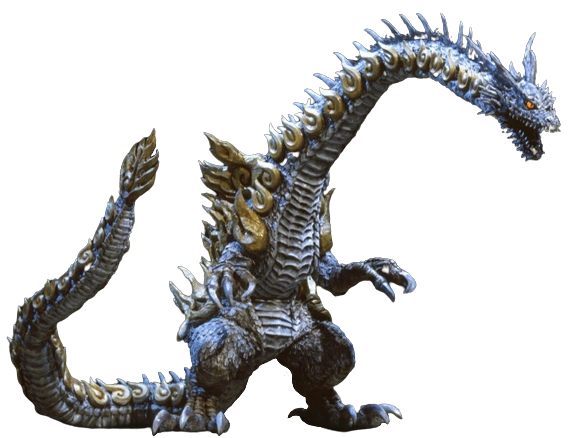Eastern dragons, or more specifically Chinese dragons, derive from ancient Chinese mythology dating back 7000 years ago before these depictions spread throughout Eastern Asia. The traditional origin story is that the region of Northern China where Chinese civilization first began was filled with dinosaur fossils, which led to the development of dragon myths (Northern China is still considered a huge "dinosaur hot spot" in palaeontology today), but this is looked at with some skepticism in modern scholarship. In contrast to their European counterparts, Eastern dragons are serpentine semi-divine entities associated to both physical and philosophical concepts, often rain, water and spiritual energies, and while not necessarily friendly, they are always trascendent. There are many other dragons in the East, but the Chinese dragon or long and its variants spread from Japan to Bhutan are by far the most well-known.
Traits
- Are mix-and-match of different animals, though the exact components vary (generally, they can best be described as "divine water snakes" or "divine sky snakes"). They sometimes evolve out of seahorses or a carp.
- Generally possess short, deer-like antlers.
- Normally associated with water (and the sky, which was considered an ocean in classical Chinese thought), and are often considered bringers of rain. Furthermore, the Azure Dragon and the Yellow Dragon are associated with Wood and Earth, respectively. In some works, some Chinese dragons can breathe fire. In some legends, they are capable of this after being punished.
- Usually live in rivers or in the sea, more rarely in mountains.
- Can be as small as a grasshopper or large enough to fill the space between heaven and earth.
- Are benign, but capable of destructive force when provoked. They may be rivals with tigers, and/or a male counterpart to the female fenghuang (Chinese phoenix). In Japanese folklore, dragons are sometimes portrayed as evil, such as the infamous eight-headed Yamata-no-Orochi.
- Instead of hoarding magical treasures, they make them. The other thing they hoard is wisdom, which they rarely share with mortals.
- Most often have one head and four legs. The longer a dragon, the more pairs of legs he has.
- Can fly via magic even if they lack wings, which they usually do. When they do have wings, they are often bird-like.
- Not only are they intelligent, they are usually a mentor archetype.
- In addition to assuming human form, they also often have the ability to transform into other animals. They can also interbreed with them, and in fact the oldest examples of this myth are Eastern.
- Semi-divine, if not an outright god.
- In relation to the above, pretty much invincible, although not that people actively seek them out to kill them anyway.
- Since they live and breathe essence of life itself, they are the exact opposite of being poisonous. Some of their fluids and parts of their bodies grant special powers too, sometimes even immortality.
- Long, the original name, is used to describe saltwater crocodiles. (Smaller crocs have different names.) This explains their affinity to water.
- Amulets and devotional images of serpentine begins go back as far as Neolithic China, and appear to have already been objects of worship and reverence at that point. They represent nature, but normally harmonic rather than chaotic, and rarely in opposition to humans.

Example of an Eastern Dragon: Natsunomeryu, the Legendary Mystic Dragon from Ultraman Max.
